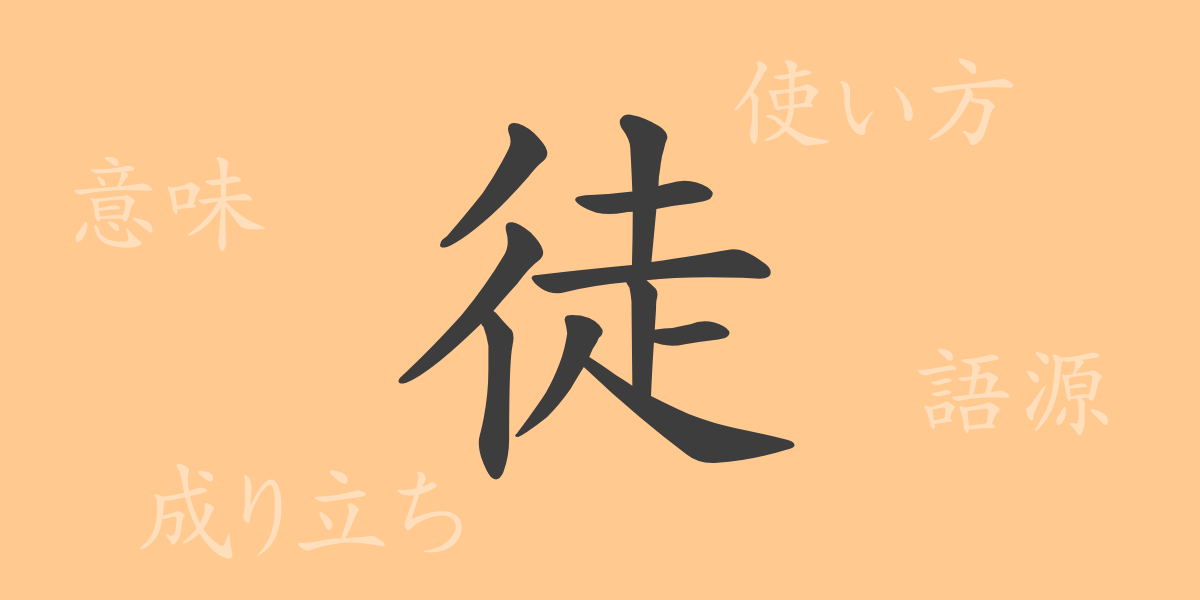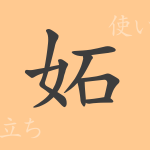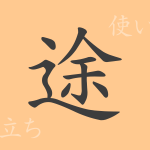The richness of the Japanese language is profoundly shaped by the deep meanings and histories embedded in each kanji character. This article focuses on the kanji ‘徒(ト)’, which, despite its less frequent usage, plays a significant role in everyday Japanese. We will explore its origins, meanings, applications, and commonly used phrases and idioms, offering a glimpse into the cultural and historical layers behind ‘徒’.
Origins of ‘徒(ト)’
The kanji ‘徒’ has evolved from ancient Chinese pictographs. Originally depicted as the image of a walking person’s legs, it has undergone transformations to represent, in ancient China, groups of soldiers or people traveling on foot. Over time, the depiction stabilized into the current form of ‘徒’, which historically denoted groups traveling by foot, particularly soldiers.
Meaning and Usage of ‘徒(ト)’
In modern Japanese, ‘徒’ typically conveys meanings like ‘alone,’ ‘in vain,’ or ‘merely.’ It is also used to denote ‘disciples’ or ‘companions,’ illustrating human relationships. ‘徒’ rarely appears alone and is most commonly seen in compounds, idioms, or proverbs.
Readings, Stroke Count, and Radical of ‘徒(ト)’
Essential details about the kanji ‘徒’ are as follows:
- Readings: On’yomi ‘ト’, Kun’yomi ‘いたずら’, ‘あだ’
- Stroke count: 10
- Radical: 彳(ぎょうにんべん)
Phrases, Idioms, and Proverbs Using ‘徒(ト)’
The kanji ‘徒’ is part of numerous phrases and idioms, each reflecting its nuanced meanings:
- 徒労(トロウ) – ‘Futile effort’
- 徒然なるままに – ‘Aimlessly; as things come’
- 徒歩(トホ) – ‘Walking, on foot’
- 徒競走(トキョウソウ) – ‘A footrace’
Understanding these expressions enriches one’s grasp of the subtleties of the Japanese language.
Conclusion on ‘徒(ト)’
The meanings and history embedded in a single kanji, such as ‘徒’, are vital elements in conveying culture through language. From ancient foot travelers to its current usage in various expressions, ‘徒’ has evolved alongside the times. This article aims to provide insights into the diverse aspects of ‘徒’, enhancing appreciation for how this kanji informs Japanese language and culture today. When encountering ‘徒’ in daily conversation, considering its rich background might add depth to your understanding and appreciation of Japanese.

























